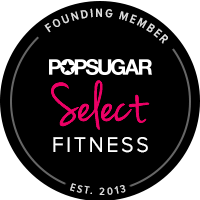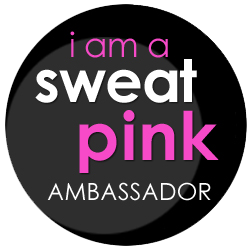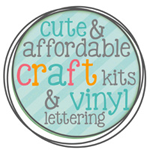Most everybody has now heard about the Paleo
lifestyle or Caveman Diet. It’s getting
quite a bit of buzz lately. No, we are
not Cavemen, we no longer have to hunt and gather our food. We have modern day
conveniences that allow us to run to the store for anything we need, but sadly
most of which has been made in a lab. Most foods you buy in packages at the
store are highly processed and full of chemicals and harmful substances. While
convenience is nice, our bodies were not created to eat those types of food. Paleo is like the original way of
eating. As we have evolved in our convenient society, so has the type of food
we eat, which has progressively lead to obesity,
cancer, osteoporosis, diabetes, heart disease, and many other diseases. The Paleo way of eating plan is about
getting back to what our ancestors ate (what we’re supposed to eat) and eliminating processed foods,
grains, and other junk our bodies aren’t designed to handle. You will be maximizing nutrition and
minimizing toxicity so you will dramatically reduce inflammation in your body.
Inflammation plays a part in all diseases from obesity, to cancer, heart
disease, arthritis and so on. No need to count calories the
Paleo way. Eat a combination of Healthy Proteins, Carbs & Healthy Fats. Eat when you are hungry and stop when you are full.
What you eat. The Paleo
way of eating is about eating plenty of whole & natural foods. Eat plenty
of Vegetables, Fruits,
Meats, Fish, Eggs, and moderate amounts of nuts and seeds. You can also use dried fruits, honey/pure
maple syrup & dark chocolate in moderation.
What you DO NOT eat. You should avoid modern
foods that require agriculture, or worse, a factory for production. This includes grains (wheat,
corn, rice, pasta, cereals, bread, oats, etc.), refined sugar, dairy, legumes,
alcohol, starches, vegetable oils and all processed foods.
You may be wondering what’s so bad about Dairy,
Legumes and Grains. Sadly, most of what we have available to us is highly processed
and full of bad substances. Here are just a few examples.
Lectins
Grains
contain large amounts of the lectin protein, which is difficult for the human
body to digest. In addition, lectins are sticky, which causes them to build up
in your intestines and digestive tract and wreak all kinds of problems, such as
leaky gut (yes, it’s as bad as it sounds). In turn, leaky gut can lead to gas,
bloating, indigestion, headaches, fatigue, and even more serious complications
like celiac disease and rheumatoid arthritis. Besides grains, lectins are found
in legumes (particularly soy) and nightshades (eggplant, peppers, potatoes,
tomatoes, and tobacco. So some people may need to eliminate those as well).
Phytic Acid
Phytic
acid is another anti-nutrient (something that blocks the absorption of
nutrients), and guess where it’s predominately found? That’s right, in grains,
corn, legumes, soy, and even in seeds and nuts (however, seeds and nuts are
okay to eat on the Paleo diet because they’re not loaded with other
anti-nutrients). Phytic acid binds to magnesium, calcium, iron, and zinc, and
because it is non-digestible to humans, it carries those critical vitamins and
minerals outside of our bodies. So, all your hard efforts to eat healthful
foods could be seriously compromised by over-consuming phytic acid. And a lack
of these nutrients could lead to anemia, muscle cramping, PMS, reproductive
inabilities, and lowered immune systems. All in all, not fun.
Dairy = Bad
Of course our bodies need calcium, but there
are plenty other places to get it besides dairy. Leafy greens, fish and more are all rich
sources of calcium without the pesky side effect of dairy. Our bodies simply
were not designed to consume milk after infancy, much less the milk from
another type of mammal! The problems with dairy could cover many pages, but to
summarize, it can lead to cancer, allergies, sinus problems, ear infections,
diabetes, constipation, anemia, and osteoporosis. Yes, despite all the commercials telling you
to consume more milk, yogurt, and low-fat cheese to build healthy bones, milk
can actually contribute to reduced bone density. This is because, among other things, milk is
very acidic, and the body may leach calcium from the bones to help neutralize
the acid. Yikes!
Paleo is not the next
fad diet. Paleo is a real lifestyle change where the primary focus is including
healthy whole and real foods as the main source. After eating junk for so many
years our bodies are desensitized to it. I would encourage anybody to try Paleo
for at least 30 days. You may not feel
well for the first few days as your body goes through a detoxification
period. But, there are plenty of
benefits that make it so worth it.
Benefits of a Paleo Diet
Clearer skin and Healthy Teeth
Stable Blood Sugar
Weight Loss
Balanced Energy (less highs and lows)
Improved Sleep
Fewer allergies
Possible reverse of Type II diabetes and other diseases
Meals are more satisfying
Less hungry
Reduce Cancer risk, Heart Disease and more!
Good food is your fuel.
More importantly you are going to feel better, but these types of foods
are also going to get you through a tough workout!
Diet changes have been the biggest thing to help me with my digestive issues and hormonal issues including leaky gut, Stage 3 Adrenal fatigue, flipped hormones and hypoglycemia. You can read posts about My health here.
Diet changes have been the biggest thing to help me with my digestive issues and hormonal issues including leaky gut, Stage 3 Adrenal fatigue, flipped hormones and hypoglycemia. You can read posts about My health here.
Let
Food be your Medicine, Eat to Live!
Here are a few of my Favorite Paleo Resources. These are really helpful, you will definitely want to check these out!
*The Paleo Approach book- Reverse autoimmune disease!- A great informational, get down to the science book!
*The Paleo Approach book- Reverse autoimmune disease!- A great informational, get down to the science book!
*Practical Paleo- Useful Printables guides- love these!
*Whole30 is a type of stricter form of Paleo because you do not eat any sweeteners or "Paleofy" any desserts, and are more aware of staying away from nitrates, carageenans, etc in even so called "healthy" foods while doing Whole30. It also is a great place to start!
Do you have any favorite Paleo resources? Please share!
These are a couple of my favorite Paleo books
These are a couple of my favorite Paleo books


































